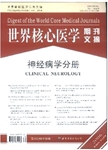眼咽肌营养不良患者的上睑下垂加重其吞咽困难
Ptosis aggravates dysphagia in oculopharyngeal muscular dystrophy作者机构:304 Neuromuscular Centre Nijmegen Institute of Neurology Radboud University Nijmegen Medical Centre PO Box 9101 6500 HB Nijmegen Netherlands
出 版 物:《世界核心医学期刊文摘(神经病学分册)》 (Digest of the World Core Medical Journals:Clinical Neurology)
年 卷 期:2006年第2卷第6期
页 面:37-37页
学科分类:1002[医学-临床医学] 100212[医学-眼科学] 100204[医学-神经病学] 10[医学]
主 题:吞咽困难 上睑下垂 肌营养不良 患者 视频荧光造影检查 头部位置 VAS评分 视觉模拟量表 严重程度
摘 要:Background: Ptosis and dysphagia are important features in oculopharyngeal muscular dystrophy (OPMD). Objective: Retroflexion of the head is a well known compensatory mechanism for ptosis, but generally retroflexion has a negative effect on swallowing. We hypothesised that severity of ptosis is related to degree of retroflexion and that this compensation is responsible for deteriorating dysphagia. Methods: Nine OPMD patients were examined in the conditions “head position adapted to ptosis and “head position slightly flexed. Ptosis was quantified by photogrammetry and retroflexion of the head by digital photographs. The severity of dysphagia was measured using visual analogue scales (VAS) and by calculating swallowing volumes and oropharyngeal swallow efficiency (OPSE) based on videofluoroscopy. Results: Statistical analyses show a significant relationship between ptosis and degree of retroflexion. The degree of retroflexion of the head correlated significantly with VAS scores and with the maximum swallowing volume. The slightly flexed head position significantly improved VAS scores as well as swallowing volumes and OPSE. Conclusion: In OPMD patients, ptosis significantly correlates with retroflexion of the head, which has a negative effect on swallowing. Subjective and objective reduction of swallowing problems was found when patients were instructed to eat and drink with a slightly flexed head position.



